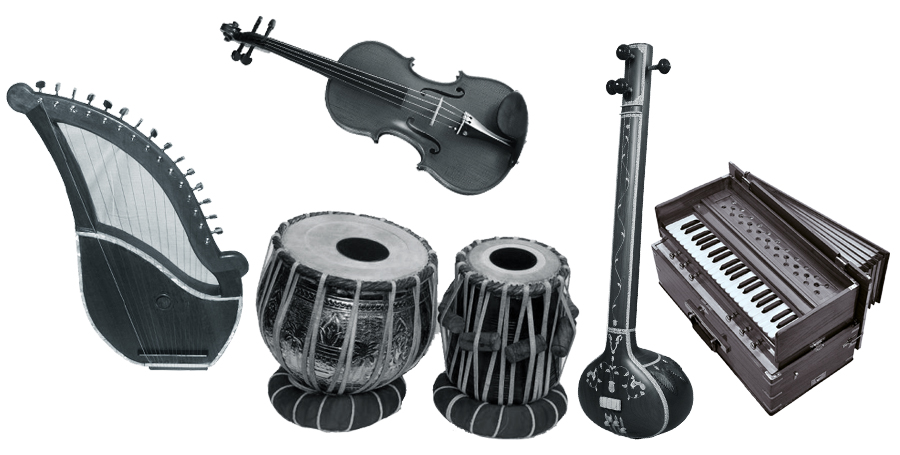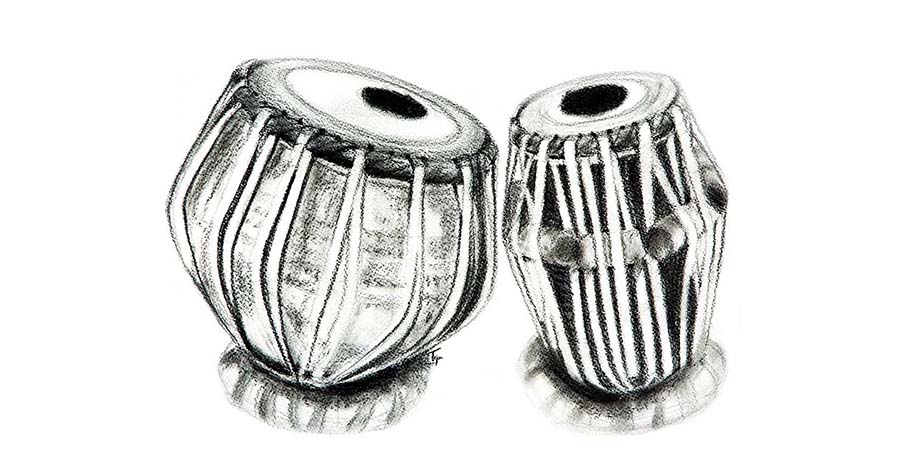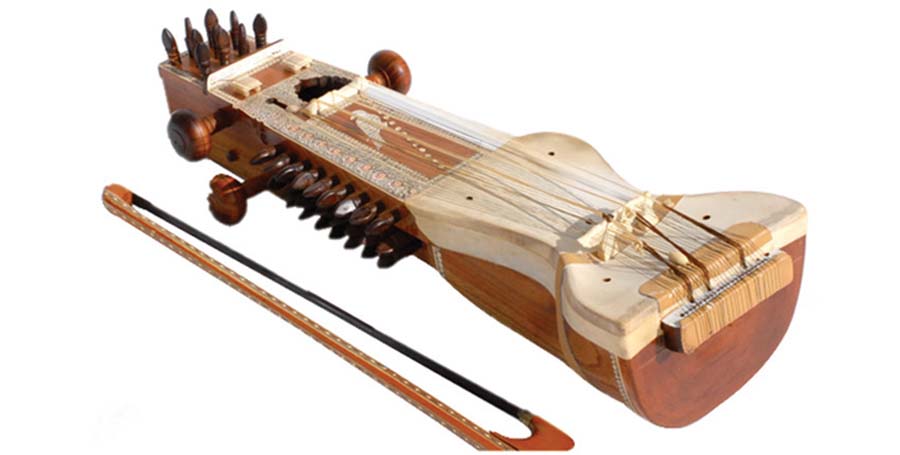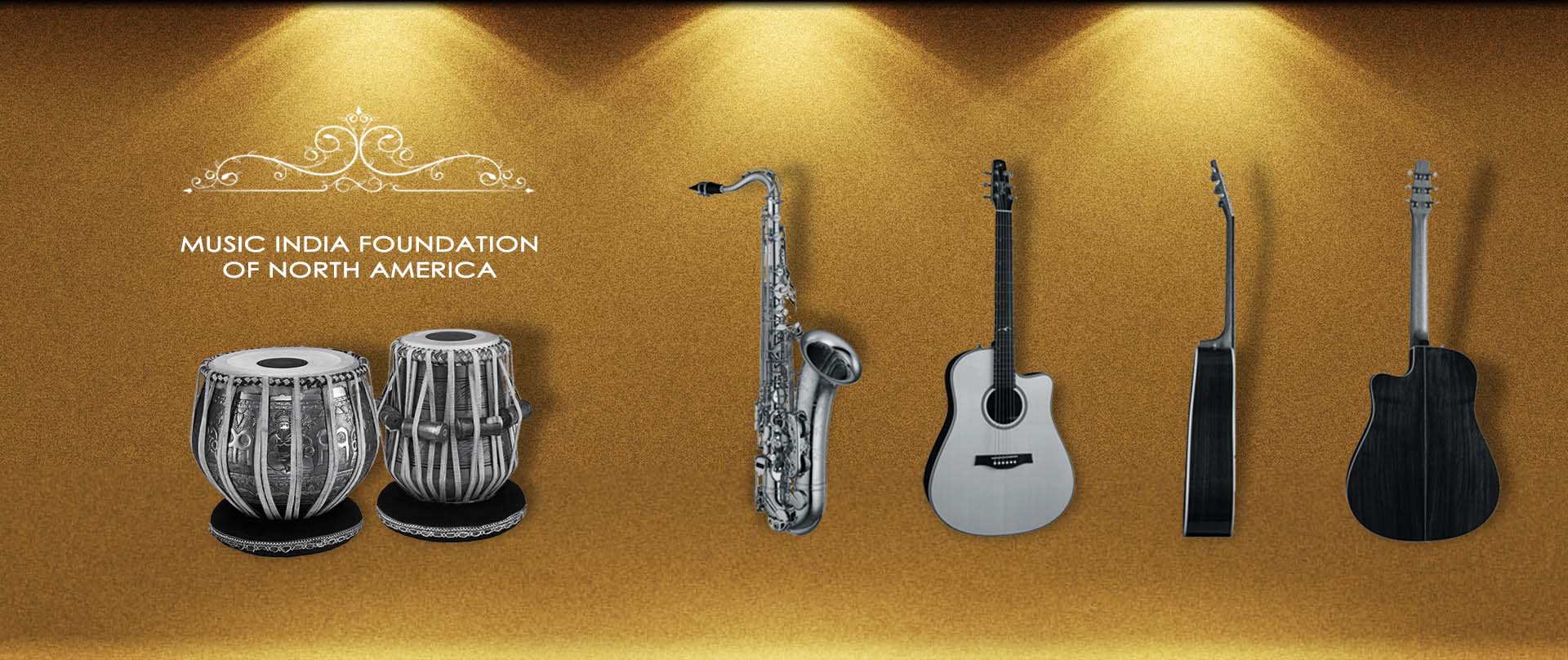Music India Foundation
The Indian classical music has two foundational elements, raga and tala. The raga forms the fabric of a melodic structure, the tala measures the time cycle. The raga gives an artist the ingredients palette to build the melody from sounds, while the tala provides them with a creative framework for rhythmic improvisation using time. Dhrupads are among the oldest classical Indian music compositions, with heroic, laudatory and spiritual themes. They are the basis for many subgenre of Indian music.
The root of music in ancient India are found in the Vedic literature of Hinduism. The earliest Indian thought combined three arts, syllabic recital (vadya), melos (gita) and dance (nrtta). As these fields developed, sangeeta became a distinct genre of art, in a form equivalent to contemporary music. This likely occurred before the time of Yāska (c. 500 BCE), since he includes these terms in his nirukta studies, one of the six Vedanga of ancient Indian tradition. Some of the ancient texts of Hinduism such as the Samaveda (c. 1000 BCE) are structured entirely to melodic themes, it is sections of Rigveda set to music.

The Music India Team







Music India Foundation is formed by these music enthusiasts on September 8th, 2017 with a mission of promoting Indian Classical music in United States and support Struggling musicians.
Indian Classical Music
Indian classical music is a genre of South Asian music. It has two major traditions. The North Indian classical music tradition is called Hindustani, while the South Indian expression is called Carnatic.These traditions were not distinct till about the 16th century. There on, during the turmoils of Islamic rule period of the Indian subcontinent, the traditions separated and evolved into distinct forms.However, the two systems continue to have more common features than differences.
The roots of the classical music of India are found in the Vedic literature of Hinduism and the ancient Natyashastra, the classic Sanskrit text on performance arts by Bharata Muni. The 13th century Sanskrit text Sangita-Ratnakara of Sarangadeva is regarded as the definitive text by both the Hindustani music and the Carnatic music traditions.


The Indian classical music has two foundational elements, raga and tala. The raga forms the fabric of a melodic structure, the tala measures the time cycle. The raga gives an artist the ingredients palette to build the melody from sounds, while the tala provides them with a creative framework for rhythmic improvisation using time. Dhrupads are among the oldest classical Indian music compositions, with heroic, laudatory and spiritual themes. They are the basis for many subgenre of Indian music.
The root of music in ancient India are found in the Vedic literature of Hinduism. The earliest Indian thought combined three arts, syllabic recital (vadya), melos (gita) and dance (nrtta). As these fields developed, sangeeta became a distinct genre of art, in a form equivalent to contemporary music. This likely occurred before the time of Yāska (c. 500 BCE), since he includes these terms in his nirukta studies, one of the six Vedanga of ancient Indian tradition. Some of the ancient texts of Hinduism such as the Samaveda (c. 1000 BCE) are structured entirely to melodic themes, it is sections of Rigveda set to music.
The Samaveda is organized into two formats. One part is based on the musical meter, another by the aim of the rituals. The text is written with embedded coding, where swaras (octave notes) are either shown above or within the text, or the verse is written into parvans (knot or member) in simple words this embedded code of swaras is like the skeleton of the song. The swaras have about 12 different forms and different combinations of these swaras are made to sit under the names of different ragas. The specific code of a song clearly tells us what combination of swaras are present in a specific song. The lyrical part of the song is called “sahityam” and sahityam is just like singing the swaras altogether but using the lyrics of the song. The code in the form of swaras have even the notation of which note to be sung high and which one low. The hymns of Samaveda contain melodic content, form, rhythm and metric organization. This structure is, however, not unique or limited to Samaveda. The Rigveda embeds the musical meter too, without the kind of elaboration found in the Samaveda. For example, the Gayatri mantra contains three metric lines of exactly eight syllables, with an embedded ternary rhythm.



